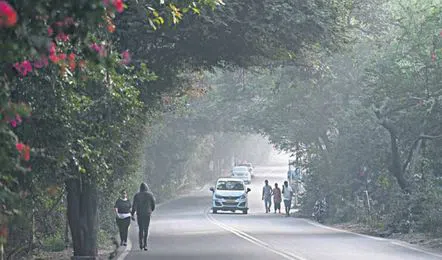The onset of the monsoon season in Kerala, which typically occurs around June 1st before progressing northwards and covering the entire country by July 15th, is anticipated to face further delays, according to the India Meteorological Department (IMD). Although a specific revised date for the expected onset has not been provided, the IMD has indicated that the current conditions, including westerly wind patterns, are favorable for its arrival. However, the formation of a cyclonic circulation that intensified into a depression over the Southeast Arabian Sea has resulted in a reduction of cloud cover, a crucial factor for the monsoon onset, along the Kerala coast.
The IMD stated on Tuesday, “Latest observations indicate that a depression has formed over the southeast Arabian Sea and about 920 km west-southwest of Goa, 1120 km south-southwest of Mumbai, 1160 km south of Porbandar… It is likely to move nearly northwards and intensify into a cyclonic storm during the next 24 hours over the Eastcentral Arabian Sea & adjoining southeast Arabian Sea.”
Delayed Monsoon Arrival in Kerala Raises Concerns for Rainfall Patterns
Previously, the IMD had predicted the monsoon’s arrival in Kerala on June 4th, with a model error of +/-4 days, as announced on May 16th. However, on Monday, the IMD reported that westerly winds persisted over the south Arabian Sea. It highlighted the presence of the cyclonic circulation over the Southeast Arabian Sea and noted that the cloud mass in the area had become more organized and concentrated. However, there has been a recent reduction in cloud cover along the Kerala coast over the past 24 hours.
The monsoon season holds significant importance for India’s economy, as 51% of the country’s farmed area, accounting for 40% of production, relies on rainfall. Additionally, approximately 47% of the population is dependent on agriculture for their livelihood. A robust monsoon directly contributes to a healthy rural economy.
Earlier reports on June 1st suggested that the progress of the monsoon might be dampened after its anticipated arrival in Kerala around June 4th, with a model error of +/-4 days, due to the potential development of a low-pressure area over the Arabian Sea a couple of days later. At that time, officials highlighted the highly variable nature of the model outputs.
An IMD official later stated that the monsoon onset in Kerala is likely to occur around June 8th, explaining, “The system is getting organized now so it is pulling all convection towards it and clouds are around the system.” M. Rajeevan, the former secretary of the Ministry of Earth Sciences, cited IMD forecast models in a tweet, suggesting that the monsoon could arrive in Kerala on June 7th or 8th. He emphasized that all onset conditions are expected to be met by the 8th, including strong monsoon winds, an East-West shear line, and significant rainfall over Kerala. He also emphasized that a delayed onset has little impact on monsoon rains.
The IMD has forecast a “normal” monsoon at 96% of the long-period average (LPA) with an error margin of +/-5%, calculated based on data from 1971 to 2020. However, private forecaster Skymet Weather has predicted “below normal” rainfall at 94% of LPA, also with an error margin of +/-5%.
Monsoon Deluge in Kerala Likely to Encounter Prolonged Delay, Crushing Hopes for Timely Rainfall

The IMD follows a well-defined process for identifying onset parameters before officially announcing the monsoon arrival. Rajeevan explained that the first criterion considered is rainfall, with at least 60% of the representative weather stations in Kerala reporting more than 2.5 mm rainfall for two consecutive days. Thunderstorms typically precede the monsoon onset. Once at least
60% of these stations record rainfall, it indicates widespread rainfall activity in Kerala and the surrounding regions. However, relying solely on rainfall as a criterion could lead to false monsoon onset predictions, as witnessed in 1995 and 2015. Therefore, two additional critical criteria are assessed: a cross-equatorial flow of winds or a westerly flow at both lower and higher levels, and the presence of adequate clouding over the region, which indicates the approach of rainfall.
It is worth noting that El Niño conditions with a nearly 100% probability are expected to persist during the monsoon season, potentially extending into the following year, as reported by the IMD last month. El Niño is characterized by unusual warming of waters in the eastern equatorial Pacific Ocean and is highly correlated with warmer summers, droughts, and weaker monsoon rains in India. The 2023 El Niño is predicted to develop following a triple dip La Niña event spanning 2020 to 2022. La Niña, the opposite of El Niño, is characterized by cooler currents in the equatorial eastern Pacific.
In conclusion, the monsoon’s delayed arrival in Kerala raises concerns about the timing and patterns of rainfall, impacting various sectors of the economy and the livelihoods of millions of people dependent on agriculture. The IMD’s ongoing monitoring and assessment of the evolving weather conditions will provide crucial information for anticipating the monsoon’s arrival and its subsequent impact on India’s agricultural sector.

